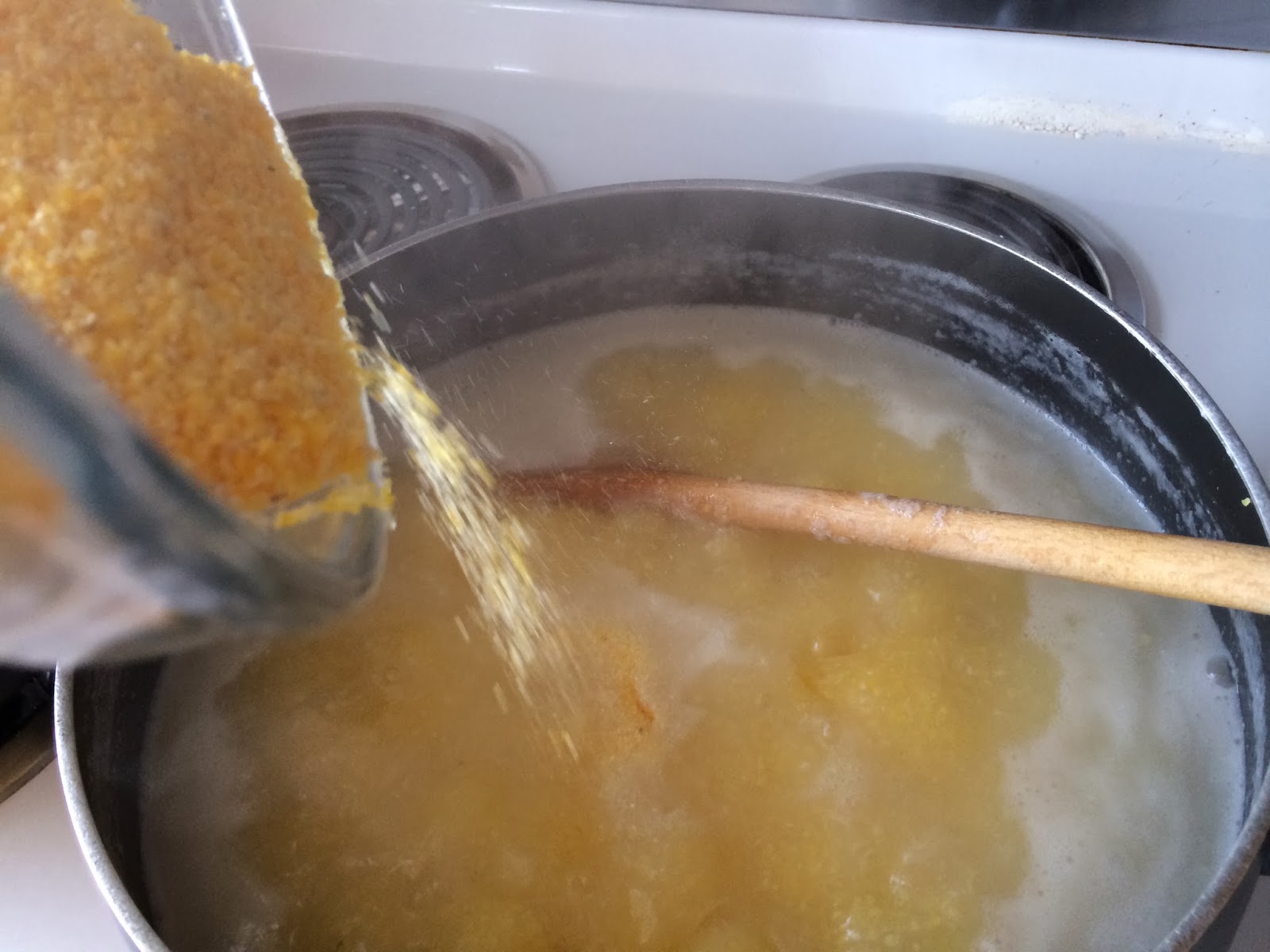 |
| Pesto alla Genovese |
 |
| Basil, pine nuts, grated cheese, EVOO, garlic & salt |
 |
| Garlic pulsed twice |
|
Pesto was born in Genoa, in the Liguria region of Italy. Genoa has a unique climate which basil and pine trees favor. Although there are many variations of pesto, this simple recipe captures the essence of the original.
Pesto alla Genovese
Ingredients:
2 cloves garlic
6 cups fresh basil, packed loosely
1/3 cup pine nuts
2/3 cup grated Parmigiano-Reggiano or Pecorino Romano cheese
4 oz extra virgin olive oil
Large pinch of salt
1.
Wash
basil and dry thoroughly. Remove leaves
from stems. Discard stems and flowers.
2. Place garlic cloves in food processor and pulse
twice.
3. Add basil, pine nuts, grated cheese and salt to
food processor. Process for about 5 seconds.
4. Continue processing while pouring olive oil into
food processor bowl, about 10 seconds longer.
5. Adjust seasoning if necessary.
6. Pesto is ready for use. Or, transfer to a clean dry airtight
container or jar. Pour extra virgin
olive oil over pesto to cover by ¼”.
***********************************
I first tasted pesto
in a small trattoria over twenty
years ago. I was transfixed! I had never heard of a green sauce for
pasta! It was beautiful to look at for
sure, but the taste was so unlike any other sauce I’ve had. Somehow I managed to find a packet of “pesto
mix” at my local grocery store. The
resulting sauce was just a shadow of what I had eaten at the restaurant. Sure, I could taste the cheese and the pine
nuts. But nowhere was the bright taste
or color of fresh basil. Then sun-dried
tomatoes came into the scene and pervaded most of the dishes so pesto sort of fell off my radar. It wasn’t until the nineties when I acquired
an Italian cookbook did I finally make my own pesto.
These days being into DIY projects, I usually only make pesto in the summer when I can get fresh
basil from my backyard. Although
traditionally made with a mortar and pestle (Italian: pestare, meaning to pound or crush), I employ a food processor
which is quicker. I also think that
since it is quicker, the basil doesn’t have time to bruise and thus retains its
color better. Regardless of the method
you use, it is still better to make your own.
Store-bought stuff no matter how well known the brand just doesn’t
measure up.
Some recipes call for grated Parmigiano-Reggiano or grated
Pecorino Romano, or a mixture of both.
Actually, you may use any grated hard cheese you want such as Fiore Sardo or Grana Padano.
So the recipe calls for pine nuts. I have to tell you that pine nuts are
expensive. They will run several dollars
per ounce! So if you’re watching your
budget, you may substitute them with almonds or walnuts. Try toasting them a little before grinding to
intensify their flavor.
And finally, the olive oil.
Using extra virgin olive oil is non-negotiable. Buy the best extra virgin olive oil you can
afford because it is what will carry and blend all of the other flavors for
you. Inferior olive oil “blends” or “pure”
olive oil, or even some EVOO won’t have that greenish tinge or fruity
flavor. Extra virgin olive oil should
never be used for cooking. Its flavor is
so delicate that cooking would destroy it.
Use it as a condiment.
Salt? Kosher or sea salt.
Period.
In Step #6 above, I said to put the pesto in an airtight jar if it won’t be used immediately. I also said to pour about ¼” of extra virgin
olive over the top. This is to keep the
basil from being exposed to air. Basil,
like cut avocados, apples and pears will oxidize if exposed to air.
What to serve with it you ask? Any kind of pasta will work. As will gnocchi.
Traditionally, pesto is served with
potatoes, green beans and sun dried tomatoes added to the dish. But pesto
isn’t just for pasta or gnocchi. You can
spread it on sliced tomatoes or potatoes, pizza, sandwiches, bruschetta and crostini. You can use it as
a dip for veggies or bread. You can also
mix it into salads. You can use anywhere
you want that rich herbaceous flavor.
So when are you going to make pesto?
|
















